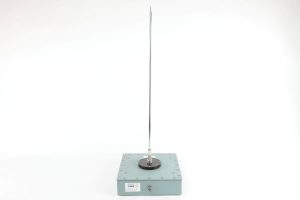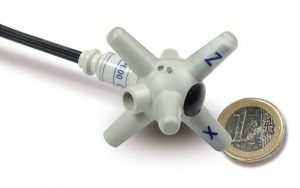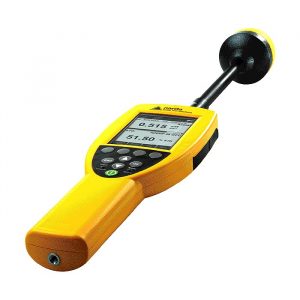Probes and antennas
Electric and magnetic field meters and probes
Electric field meters and probes can be calibrated accredited in the frequency range from 10 Hz to 20 kHz in the range from 10 V/m to 2000 V/m. Magnetic field meters and probes can be calibrated accredited in the frequency range from 10 Hz to 10 kHz in the range from 0.1 μT to 195 μT (i.e., 1 mGauss to 1.95 Gauss, or 80 mA/m to 155 A/m). More information about the maximal electric and magnetic field can be found in the attached PDF file. Typically, we calibrate frequency response and linearity of the meters and probes according to IEEE 1309-2013 standard – Standard for Calibration of Electromagnetic Field Sensors and Probes (Excluding Antennas) from 9 kHz to 40 GHz. Isotropy according to IEEE 1309-2013 standard can be also calibrated nonaccredited.
Residual (DC) magnetic field meters
Residual (DC) magnetic field meters (i.e., Gauss meters) can be calibrated up to 100 A/cm (i.e., up to 12.5 mT or up to 125 Gauss). Nonaccredited calibration typically involves linearity measurement at 10 measuring points.
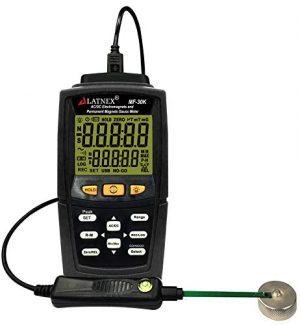
Calibration of transmitting and receiving loop antennas
Antenna factor (AF) is a key parameter for loop antennas that is used for EMC tests according to MIL-STD-461, RE101, IEEE 291 and CISPR 16 standards. The AF is defined as ratio between the electromagnetic field and the voltage on the loop antenna; the AF of receiving antennas is defined as the ratio between the incident electromagnetic field and the voltage at the output port of the receiving loop antenna and vice versa, the AF of transmitting antenna is defined as the ratio between the transmitting electromagnetic field and the voltage at the input port of the antenna.
At SIQ we calibrate AF according to the absolute and relative calibration method. Three antenna method is used as the absolute method and in this case the AF is calculated from measurements of different three antenna pairs. When a relative method is applied the AF of unknown antenna is determined using a known AF of a reference antenna. Both methods are described in CISPR 16-1-6 and ANSI IEEE C63.5 standards. The AF calibration is performed in the frequency range from 9 kHz to 120 MHz.
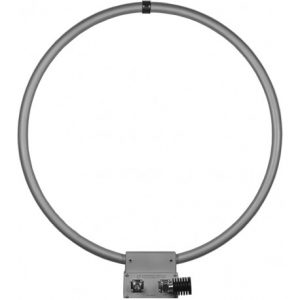
Calibration of transmitting and receiving monopole (rod) antennas
At SIQ we calibrate antenna factor (AF) of monopole antennas according to CISPR 16-1-6 and ANSI IEEE C63.5 standards. Calibration is performed using the Equivalent Capacitance Substitution Method in the frequency range from 9 kHz to 30 MHz, or up to 100 MHz if required.
